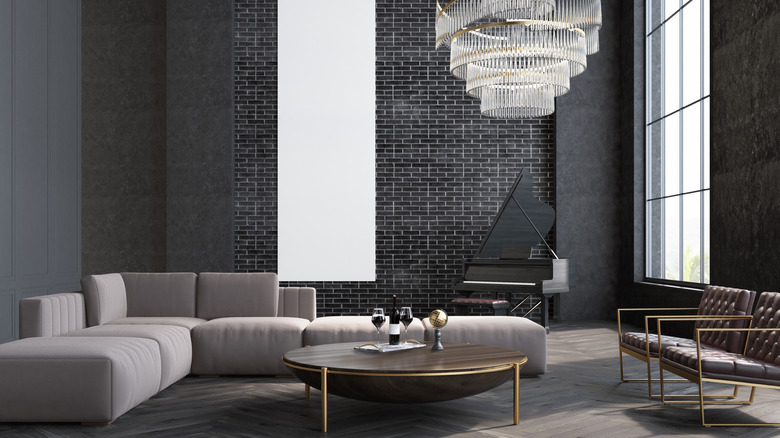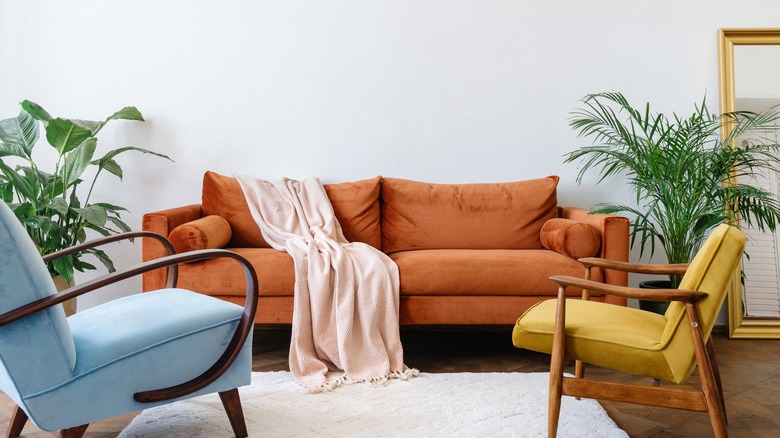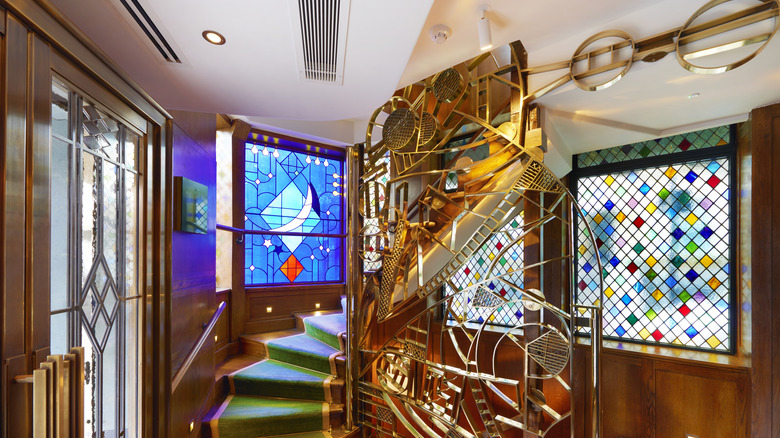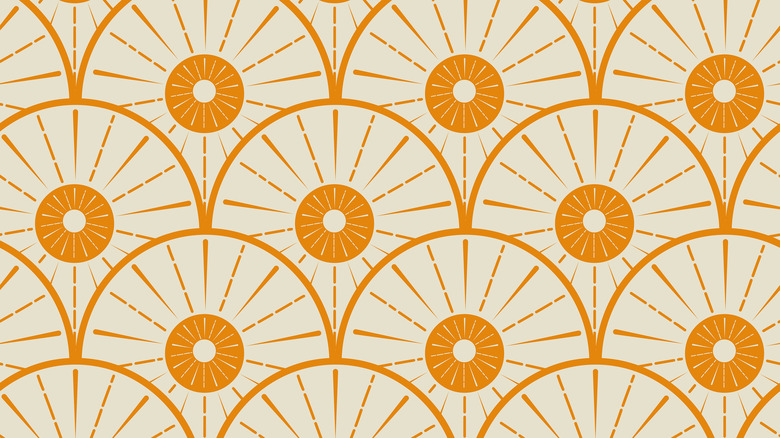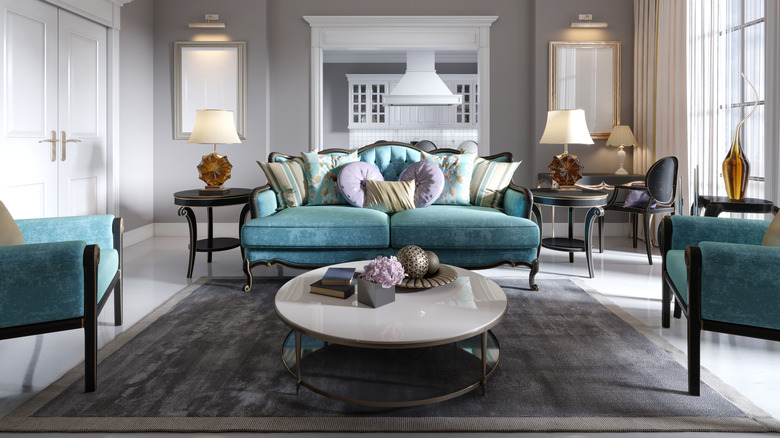An Interior Design Expert Explains Why Art Deco Will Never Go Out Of Style
Is it time to try out a new look for your home's interior? Perhaps you want a significant change. Do you enjoy symmetry in the flow and layout of your space? Then you may appreciate a linear look rather than soft curves. The Pennsylvania Historical & Museum Commission confirms that art deco is the look to incorporate for those who like geometrical elements and sharp edges.
In an exclusive interview with House Digest, interior designer Ray Langdon, who is the founder of Langdon Interiors, shares a better understanding of what art deco is and why it will never go out of style. For starters, he says, "The art deco movement was an influential art and design trend that emerged in Europe in the 1920s and spread to the United States in the 1930s." You don't have to be a history lover to appreciate the charm of this style. "It was a celebration of the modern industrial age and its many wonders, emphasizing modernity and progress. Inspired by the machine age, aviation, and modern technologies, this optimism, and forward-thinking aesthetic has made art deco a timeless and appealing style for those who value innovation and progress," Langdon adds.
Timeless shapes and colors
If you want to incorporate the prominent, stunning look that is art deco into your home, start by focusing on a few of its most defining design elements. Ray Langdon explains, "Art deco is known for its use of bold, geometric shapes, and contrasting colors, which give it a powerful visual presence that stands out from other styles. This distinctive look helps to create a unique identity that is easily recognizable and memorable, which contributes to its long-lasting appeal." If you've ever had the opportunity to tour a home with an art deco design from the 1930s or 1940s, it's hard to forget the stunning use of color and shapes that isn't just retro, but visually captivating.
"Additionally, this combination creates a sense of harmony and balance, which is a key element of art deco design," reveals Langdon. Overarching symmetry helps to make the space feel relaxing, welcoming, and beautiful. And that feeling of charm, loved by so many, is the reason why this style continues to do so well.
Materials that endure
When art deco was first developed, it used what other styles did not and pulled away from the typical wood look of more traditional interior design. Instead, designers started to use new materials that were not readily available in prior generations, notes Ray Langdon. "The use of modern materials such as chrome and glass can give art deco — which was inspired by the boom of skyscrapers — a modern and futuristic feel. This adaptability ensures that it will always have a place in design." In this way, the style can change with the times, incorporating new products or innovative materials.
Art deco isn't solely about the use of metal and glass, though. There's much more to it according to Langdon. "Materials from around the world, such as marble, brass, and wood, add a luxurious and exotic feel to the design." It's important not to see art deco as an Americanized aesthetic, as it can exhibit many cultural elements. A space can be personalized to fit an inhabitant's desires and interests, yet still maintain that art deco-inspired look.
A global aesthetic
Expanding on that point, one potential reason why art deco designs continue to be conspicuously displayed by interior decorators is this ability for it to create a unique aesthetic that emphasizes a global experience. Ray Langdon explains how this is done, stating, "Art deco often incorporates exotic, international influences from far and wide. This helps to add a unique touch of glamour and sophistication to any space, and also helps to keep the style fresh and relevant."
Langdon points to some of the more common examples to be found. "This can include elements such as Egyptian motifs, Chinese art, and Islamic patterns, which all bring an existing visual aesthetic to the design." For example, geometric elements, like zigzags, sunbursts, and chevrons that are often found in Chinese art, add elegance and a luxurious feel. An Egyptian motif may introduce hieroglyphs or obelisks, or it may add aspects of the pyramids into the design, as noted by The Met. As for Islamic décor, the art deco-inspired space may rely primarily on calligraphy or the floral patterns commonly seen in this culture's artwork.
A powerful and wide-reaching influence
If you're still looking for a deeper understanding of how to incorporate art deco into your living room or why you should consider its influences in the architectural elements of your space, consider just how prominent it is. Ray Langdon shares, "Art deco is much more than just a style; it is an influential cultural movement that has had an immense impact on the arts, architecture, and design. Art deco [has] also had a strong influence on fashion, as well as theater and film." Langdon further asserts that elements of the specific design have been "used to create a wide range of objects and structures, from buildings to furniture to jewelry."
The meshing of global elements and materials into a luxurious yet sleek design make an attractive choice for many homes. "[This] optimistic aesthetic will continue to inspire designers for years to come," states Langdon. Ultimately, the anti-traditional look of the art deco movement communicates elegance and a sophistication long-associated with the thrill of modernism. All of these aspects contribute to its desirability even now, nearly 100 years later.
